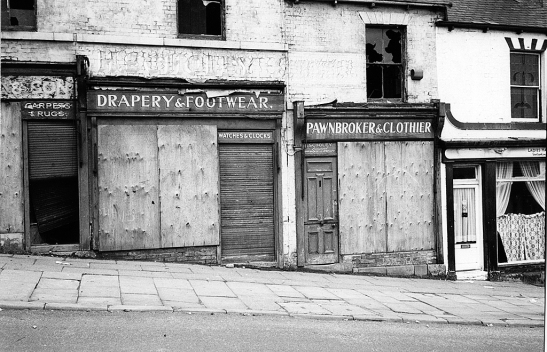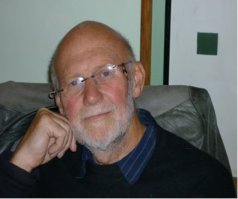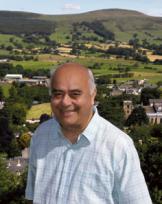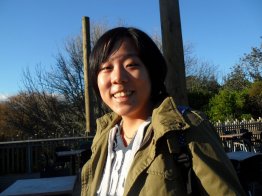How a grassroots campaign saved a suburb
Raised voices and special chemistry: the politics of Walkley’s resistance
By Dong Cao
Walkley, a suburb in the north-west of Sheffield was once hailed as the ‘cradle’ of resident campaigns when pressure from grassroots groups saved its central area from demolition in the 1970s.
Following WWII, Britain’s population, and the number of households were expected to increase dramatically, which led to a huge demand for housing. The Labour government of the time also wanted to get rid of all slum houses, to improve people’s living conditions.
But the policy approach was quite ‘top down’. With grants available for building more houses, local councils were imposing what they believed to be best for people, rather than including those people in the decision-making process.
In Sheffield too, housing was the top political priority. The city council was keen on slum clearance, and building ‘commendable’ new flats.
Walkley was designated for clearance (below South Road/ Howard Road) as houses in this area had only outside toilets, and many had leaking roofs, water running down the inside walls. In particular, houses lower down the hill below Walkley Road and Walkley Street were very poor and dingy, with some squeezing in between two terraced houses. Houses in upper Walkley were in much better conditions.
The slum clearance policy sparked extreme opposition from local residents, who lived in terrible uncertainty and desperately wanted to retain their houses and their community, and to have their voice heard.
Geoff Green was one of the first to take action. He came to Sheffield in 1968, and was living in Hillsborough. One day when he drove to the Arts Tower, passed through Walkley, he was so distressed to see a lot of old houses scheduled for demolition that he decided to stand for council election as an independent candidate. He believed that to be the best way to start a campaign to save the inner Sheffield community.
‘It may have been an arrogant thing to do for a 24-year-old’, recalled Mr Green. ‘But I believed a lot of houses only need modernising, they could be improved. I was familiar with local councils and knew about the slum clearance, so I decided to run for the election.’
Geoff Green was a research assistant and a PhD student at the University of Sheffield. His colleagues at the University helped him distribute posters, appealing to local residents to vote for him and join the campaign.
Mr Green lost the election in 1970 but still managed to secure 772 votes as an independent candidate against the Labour and Conservative parties – each of which got roughly 1500 votes, with Labour winning by ten votes.
Soon after the election, Mr Green set up Walkley Action Group (WAG) with other community-minded companions such as Mrs Collett, who became chair of the group, and Robin Stansfield, secretary of the group to ‘show the strength of feeling, present the council with technical evidence and an alternative plan’.
The group gained popular support from residents. Architecture and planning students from the University helped map preferences, providing technical solutions to improve houses and ensure any new housing would be appropriate to the area. They held public meetings to inform people of alternatives and set up shop at the bottom of Industry Street to show their survey and results.
The group also protested persistently against the Kelvin Flats development, huge blocks of high-density flats. Many people disliked this “street in the sky” Alcatraz, nicknamed after the prison island in North America.
Meanwhile, Labour lost power in 1968 (regained in 1969), and realised they needed to change, and could not push on with their demolition plans.
Veronica Hardstaff was the councillor for Walkley back then. People voted for her because she promised to save their houses. ‘I stood for election so I would be in better position to achieve what I wanted to achieve’, said Mrs Hardstaff, ‘It was unusual at that time though, to have women under 30 on the council.’
Mrs Hardstaff worked as a councillor to persuade the council to shift their policy from demolition to improvement. There was also a change of political attitude within the council: councillors wanted to restore the human dimension and social interaction, and gain consensus on proposed changes.
In 1971, the council agreed in principle to take central Walkley out of slum clearance. In 1972, grassroots campaigners promoted a big public meeting in Walkley. Senior politicians, the city architect, chairs of planning and housing, and more than 400 others attended.
Narendra Bajaria was the assistant planning officer. He recalled that the meeting room was ‘absolutely crowded’.
‘People were shouting’, said Mr Bajaria, ‘with Walkley Action Group’s support, they hoped to tell the council what they wanted.
‘People were saying that the council’s current approach was unacceptable, they were taking away good homes. With a little bit of support the houses could be made better and their community retained.’
It was in 1974, after consultation and property survey, that the improvement area was officially approved by the full council. Walkley was designated an area of renovation with selective demolition. Councillors recognized that demolition was destroying the community. They removed the threat of demolition and this rebuilt confidence among local residents.
With professional and persistent campaigns, Walkley Action Group (WAG) succeeded in getting 95percent of the houses off the ‘schedule for demolition’ list.
The area up to Palm Street, down Fulton Road, west to South Road and north east to Whitehouse Road was scheduled for improvement. People could apply for grants to either modernise their houses with up-to-date facilities, such as a new kitchen, or to create an extra attic bedroom if their houses were in sound conditions.
Newer houses, bungalows were built to cater for the shortage of accommodation for old people, and those who had moved out through the clearance programme.
Some really unfit, dingy houses lower down the hill below Walkley Road and Walkley Street were cleared to build the Langsett Estate. A small part of South Road was demolished and left as open green area – now the Walkley Green opposite Asda. More off-street parking was provided and the improvement scheme also changed some road patterns to make Walkley a pleasanter community area.
Mrs Hardstaff said the scheme made Walkley look more attractive, encouraged people to use local shops and facilities and kept some community spirit going.
Mr Bajaria said WAG was significant in alerting the council to respond to the concerns of local residents. He genuinely believes people should be listened to.
Mr Green, the ex-member of Walkley Action Group who left Sheffield in 1971 and was back in 1980, said it was the chemistry between local residents, architecture and planning students and the Walkley Action Group that he cherished the most.
There may be a radical tradition in Walkley. ‘If people don’t like things, they decide to do something about it’, Mrs Hardstaff said, “They didn’t allow some people to do something over their heads.’
And no doubt it was also the sense of belonging, the great devotion of local residents that saved Walkley and transformed it into what is now a prosperous and beautiful community.
This article was written by Dong Cao, a third year journalism student at the University of Sheffield. We are grateful for Dong’s interest in Walkley’s history and for taking the time to interview Geoff, Narendra and Veronica then write this article.







Pingback: Walkley, Libraries, and the Future of Community « Ruskin In Sheffield
Veronica Hardstaff was *A* councillor for Walkley. All wards in city councils have three councillors.
Pingback: In The City: Looking Forward to a Week of Urban History at Sheffield